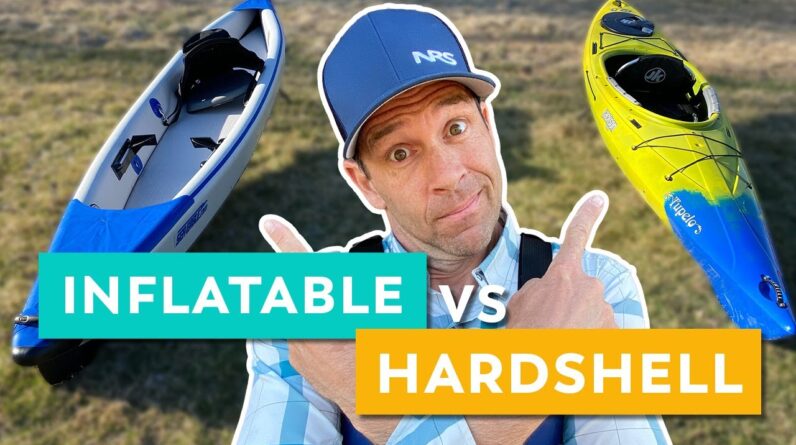
Have you ever wondered whether an inflatable kayak or a hard shell kayak is the better option? Well, you’re in luck because we’re here to dive into the world of kayaking and explore the pros and cons of both types. Whether you’re a seasoned kayaker or a newbie looking to get started, this article will provide you with valuable insights to help you make an informed decision.
Let’s start with inflatable kayaks. They offer a lot of convenience and portability. Imagine being able to easily deflate your kayak, pack it into a carrying bag, and throw it in the trunk of your car. Inflatable kayaks are also lightweight, making them ideal for travelers and those with limited storage space. However, some people worry about their durability compared to hard shell kayaks.
On the other hand, hard shell kayaks have been the go-to for many kayakers for years. They are known for their stability and durability in harsher conditions. Hard shells can handle rough waters and are less prone to punctures compared to their inflatable counterparts. However, they can be heavier and more difficult to transport.
In this article, we’ll explore the different aspects of both types of kayaks, including performance, maintenance, cost, and more. By the end, you’ll have a better understanding of which kayak type suits your needs and preferences the best. So, let’s jump right in and unravel the mystery of inflatable kayaks versus hard shell kayaks.
Kayaks Inflatable Vs Hard Shell
When it comes to choosing a kayak, there are two main options to consider: inflatable kayaks and hard shell kayaks. Each type has its own advantages and disadvantages, and understanding these factors is essential in making an informed decision. In this article, we will explore the pros and cons of both inflatable kayaks and hard shell kayaks, as well as provide guidance on choosing the right kayak for your needs.
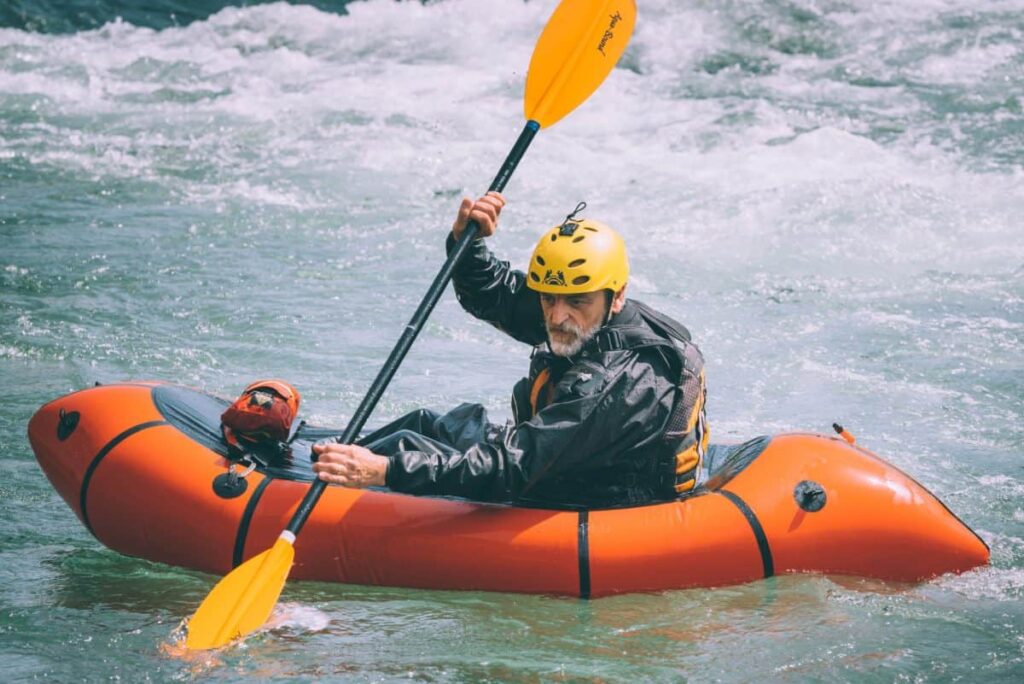
Advantages and Disadvantages of Inflatable Kayaks
Portability and Storage
One of the biggest advantages of inflatable kayaks is their portability. When deflated, they can easily fit into a compact bag, making them convenient to transport and store. Whether you’re traveling by car or plane, you can simply deflate your kayak and pack it away without any hassle. This portability is particularly beneficial for those who enjoy exploring different waterways or going on outdoor adventures.
Durability and Longevity
Contrary to popular belief, inflatable kayaks are actually quite durable. Made from high-quality materials such as PVC or Hypalon, they are resistant to punctures and abrasions. However, it’s important to note that they are not completely impervious to damage. While modern inflatable kayaks are designed to withstand rough conditions, they may still be at risk of punctures from sharp objects. Regular maintenance and care are essential to prolong the life of your inflatable kayak.
Ease of Use
One of the standout features of inflatable kayaks is their ease of use. Inflating and deflating them is a straightforward process that can be done in a matter of minutes. Additionally, most inflatable kayaks come with built-in pump systems, making it even more convenient to set up. This ease of use makes inflatable kayaks the ideal choice for beginners or those who prefer a hassle-free experience on the water.
Versatility and Performance
Inflatable kayaks are highly versatile and can be used in various water conditions, such as rivers, lakes, and calm coastal waters. They are well-suited for recreational activities like fishing, leisure paddling, or even whitewater rafting. However, it’s important to note that inflatable kayaks may not perform as well as hard shell kayaks in terms of speed and tracking. If you’re looking for a high-performance kayak for advanced techniques or competitive racing, a hard shell kayak may be a better option.
Advantages and Disadvantages of Hard Shell Kayaks
Stability and Maneuverability
Hard shell kayaks offer exceptional stability, allowing beginners to feel more confident and balanced on the water. Their solid construction provides a stable base and reduces the risk of tipping over. Additionally, hard shell kayaks are designed for efficient maneuverability, making it easier to navigate through narrow channels or tight corners.
Durability and Resistance
Hard shell kayaks are typically made from durable materials such as fiberglass, plastic, or polyethylene. These materials are highly resistant to impacts, ensuring that your kayak remains intact even when encountering rocks or underwater obstacles. However, it’s worth mentioning that hard shell kayaks are susceptible to scratches and dents, which can affect their appearance but rarely compromise their performance.
Speed and Efficiency
If speed is a priority for you, then a hard shell kayak is the way to go. With their sleek design and streamlined hulls, hard shell kayaks cut through the water with minimal resistance, allowing you to paddle faster and travel longer distances more efficiently. This makes them an excellent choice for long-distance trips or racing enthusiasts.
Weight and Transportation
One of the downsides of hard shell kayaks is their weight. Compared to inflatable kayaks, hard shell kayaks are significantly heavier and can be more challenging to transport. Moving them from one location to another may require the use of a roof rack, trailer, or the assistance of another person. Additionally, storage space can be an issue, as hard shell kayaks require a dedicated area to keep them safe and secure when not in use.
Inflatable Kayaks: Exploring the Benefits
Easy Storage and Portability
If you value convenience and ease of transportation, inflatable kayaks are the clear winner. Their ability to deflate and pack down into a compact bag allows you to store them in small spaces or transport them in the trunk of your car, on public transportation, or even on a plane. This versatility makes inflatable kayaks a popular choice for those who love to explore different waterways or travel to remote locations.
Durable Materials and Construction
Contrary to what some may believe, inflatable kayaks are built to last. They are typically made from high-quality materials such as PVC or Hypalon, which offer excellent resistance to punctures and abrasions. However, it’s important to take precautions to avoid potential damage. Avoid sharp objects, rocky shorelines, and other potential hazards to ensure the longevity of your inflatable kayak.
Simple Set-Up and Pack-Up
Setting up an inflatable kayak couldn’t be easier. Most models come with built-in pump systems that allow for quick and effortless inflation. Within a matter of minutes, your kayak is ready to hit the water. When it’s time to pack up, simply deflate the kayak and fold it neatly into its storage bag. This simplicity saves you time and effort, allowing you to focus on enjoying your kayaking adventure.
Adaptability to Different Water Conditions
Inflatable kayaks are incredibly versatile and can be used in various water conditions. From calm lakes to fast-flowing rivers, inflatable kayaks can handle it all. Many models are designed to be stable and maneuverable, allowing beginners to feel confident and comfortable. Additionally, some inflatable kayaks are suitable for whitewater rafting, offering a thrilling and exhilarating experience for adventure seekers.
Inflatable Kayaks: Understanding the Limitations
Risk of Punctures and Leaks
While inflatable kayaks are designed to be durable, they are not entirely immune to the risk of punctures or leaks. Sharp rocks, branches, or other sharp objects in the water can cause damage to the kayak. It’s essential to exercise caution and avoid potential hazards to minimize the risk of damage. Additionally, proper maintenance and regular inspections are necessary to identify and repair any leaks promptly.
Potential for Reduced Performance
Inflatable kayaks may not provide the same level of performance as hard shell kayaks. Due to their design and construction, inflatable kayaks may struggle with tracking, speed, and overall efficiency in the water. If you’re a seasoned paddler looking for maximum performance, a hard shell kayak would be a more suitable option.
Inadequate Tracking and Speed
As mentioned earlier, inflatable kayaks may not possess the same tracking and speed capabilities as hard shell kayaks. Their rounded and wider hulls create more water resistance, which can affect tracking and speed. While inflatable kayaks are still suitable for recreational use and leisurely paddling, they may not be the best choice for those seeking high-performance kayaking experiences.
Lack of Rigidity for Advanced Techniques
Inflatable kayaks can lack the rigidity necessary for advanced kayaking techniques. Their flexible nature may limit your ability to execute certain maneuvers or paddle with precision. If you’re an experienced kayaker looking to perform advanced techniques such as Eskimo rolls or aggressive turns, a hard shell kayak is better suited to meet those specific needs.
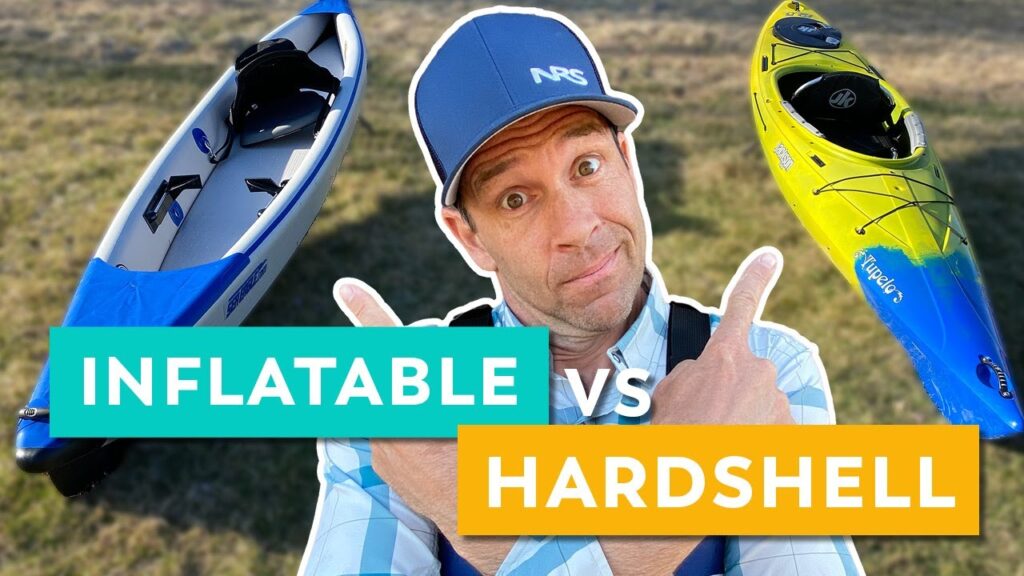
Hard Shell Kayaks: Embracing the Advantages
Exceptional Stability and Control
Hard shell kayaks offer unparalleled stability and control on the water. Their solid construction provides a strong foundation, allowing you to feel confident and balanced while paddling. This stability is particularly beneficial for beginners who may feel apprehensive about getting into a kayak for the first time. With a hard shell kayak, you’ll have peace of mind knowing that you’re in control.
Superior Durability and Impact Resistance
Hard shell kayaks are built to last. Made from robust materials such as fiberglass, plastic, or polyethylene, they can withstand impacts from rocks, branches, and other potential obstacles. While scratches and minor dents may occur, they rarely impact the kayak’s performance or structural integrity. With proper care and maintenance, a hard shell kayak can last for many years.
Enhanced Speed and Efficiency
If speed is important to you, then a hard shell kayak is the way to go. With their sleek and streamlined design, hard shell kayaks cut through the water with minimal resistance. This allows you to paddle faster and achieve optimal efficiency. Whether you’re embarking on long-distance expeditions or participating in kayak races, a hard shell kayak will help you achieve your desired speed and performance.
Suitability for Advanced Techniques
Hard shell kayaks are ideal for those looking to take their paddling skills to the next level. Thanks to their rigid construction, hard shell kayaks offer more precise control and responsiveness, making them suitable for advanced techniques such as Eskimo rolls, edging, and bracing. If you’re an experienced kayaker looking to push your boundaries and explore advanced kayaking techniques, a hard shell kayak is the perfect choice.
Hard Shell Kayaks: Considering the Drawbacks
Challenges in Transportation and Storage
One of the significant drawbacks of hard shell kayaks is their weight and size. Unlike inflatable kayaks that can be easily deflated and packed away, hard shell kayaks require the use of a roof rack, trailer, or additional assistance for transportation. They also require dedicated storage space, which may not be feasible for those with limited storage options. If ease of transportation and storage is a concern for you, an inflatable kayak would be a more suitable choice.
Weight Limitations and Handling Difficulties
Due to their solid construction, hard shell kayaks tend to be heavier than inflatable kayaks. This can pose challenges when it comes to handling and maneuvering the kayak, especially for smaller individuals or those with limited strength. Beginners may find it daunting to lift and carry a hard shell kayak, particularly if they are paddling solo. It’s important to consider your physical capabilities and limitations before opting for a hard shell kayak.
Susceptibility to Damage and Repairs
While hard shell kayaks are generally durable, they are not invincible. Hard impacts or collisions can cause cracks or fractures, requiring repair or replacement. Additionally, scratches and gouges from rocky shorelines or other abrasive surfaces can compromise the kayak’s aesthetic appeal. It’s important to exercise caution and regularly inspect your hard shell kayak for any signs of damage or wear and tear.
High Initial Investment
One of the most significant drawbacks of hard shell kayaks is their higher price tag. Compared to inflatable kayaks, hard shell kayaks tend to be more expensive due to their solid construction and durability. This initial investment can be a deterrent for those on a tight budget or those who are unsure if kayaking is a long-term hobby. If cost plays a significant role in your decision-making process, an inflatable kayak may be a more affordable option.
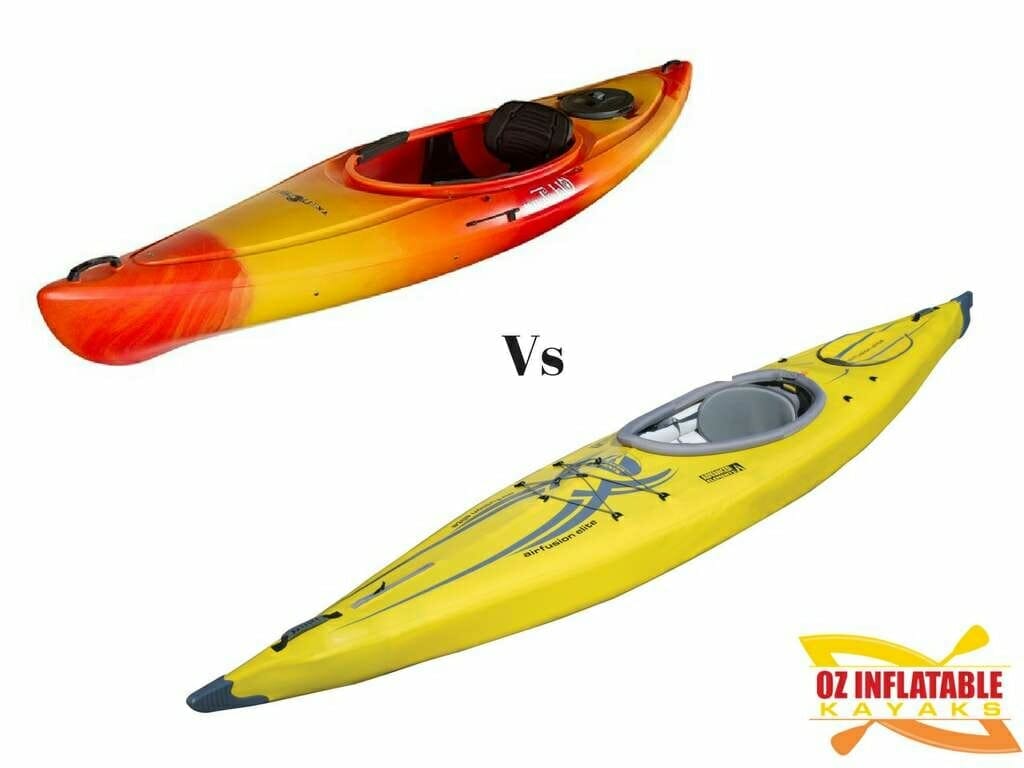
Choosing the Right Kayak: Factors to Consider
Intended Use and Environment
One of the first factors to consider when choosing a kayak is the intended use and environment. Think about the type of water you will be paddling on, whether it’s calm lakes, slow-moving rivers, or rough ocean conditions. Additionally, consider the activities you plan to engage in, such as fishing, recreational paddling, or whitewater rafting. Both inflatable and hard shell kayaks have models designed specifically for various purposes and environments.
Skill Level and Experience
Your skill level and experience in kayaking should also influence your decision. Beginners may find inflatable kayaks more forgiving, allowing them to feel more stable and gain confidence on the water. On the other hand, experienced kayakers may appreciate the performance and precision offered by hard shell kayaks, enabling them to execute advanced techniques and paddle with more control. Be honest with yourself about your skill level and choose a kayak that matches your abilities.
Transportation and Storage Options
Consider your transportation and storage options when selecting a kayak. If you have limited storage space or anticipate difficulty in transporting a heavy kayak, an inflatable kayak is a more practical choice. On the other hand, if you have a trailer or ample storage space and don’t mind the extra weight, a hard shell kayak may be a viable option.
Budget and Investment
Your budget is another crucial factor to consider. Determine how much you’re willing to invest in a kayak, including any additional accessories or equipment. Both inflatable and hard shell kayaks come in a range of price points, so it’s essential to find a balance between your budget and the features you desire. Remember, a kayak is an investment, and choosing the right one will ensure that you enjoy many years of paddling adventures.
Inflatable vs Hard Shell: Making the Decision
Comparing Performance and Versatility
When it comes to performance and versatility, it’s important to consider your specific needs and preferences. Inflatable kayaks offer convenience, portability, and the ability to navigate various water conditions. They are ideal for recreational use and beginners who value ease of use and storage. Hard shell kayaks, on the other hand, excel in stability, speed, and maneuverability. They are favored by experienced kayakers and those looking to perform advanced techniques or participate in competitive racing.
Weighing Durability and Resistance
Both inflatable and hard shell kayaks have their own level of durability and resistance to impacts. Inflatable kayaks are designed with durable materials and construction, offering resistance to punctures and abrasions. However, they are not entirely immune to damage from sharp objects. Hard shell kayaks, made from robust materials, provide superior impact resistance and durability. When weighing durability and resistance, assess the type of water you’ll be paddling in and the potential hazards you may encounter.
Considerations for Skill Level and Experience
Your individual skill level and experience should play a significant role in your decision-making process. Beginners and casual paddlers often find inflatable kayaks more forgiving and easy to handle. On the other hand, experienced kayakers may prefer the enhanced performance and control offered by hard shell kayaks. Consider your current skill level and how you envision your kayaking abilities progressing in the future.
Finalizing Based on Individual Preferences
Ultimately, the decision between an inflatable kayak and a hard shell kayak boils down to personal preference. Consider the advantages and disadvantages of each type, along with your intended use, skill level, transportation options, and budget. Take the time to research and test different models if possible. Talking to experienced kayakers or visiting a kayak store can also provide valuable insights. Remember, the kayak you choose should align with your needs, lifestyle, and aspirations on the water.
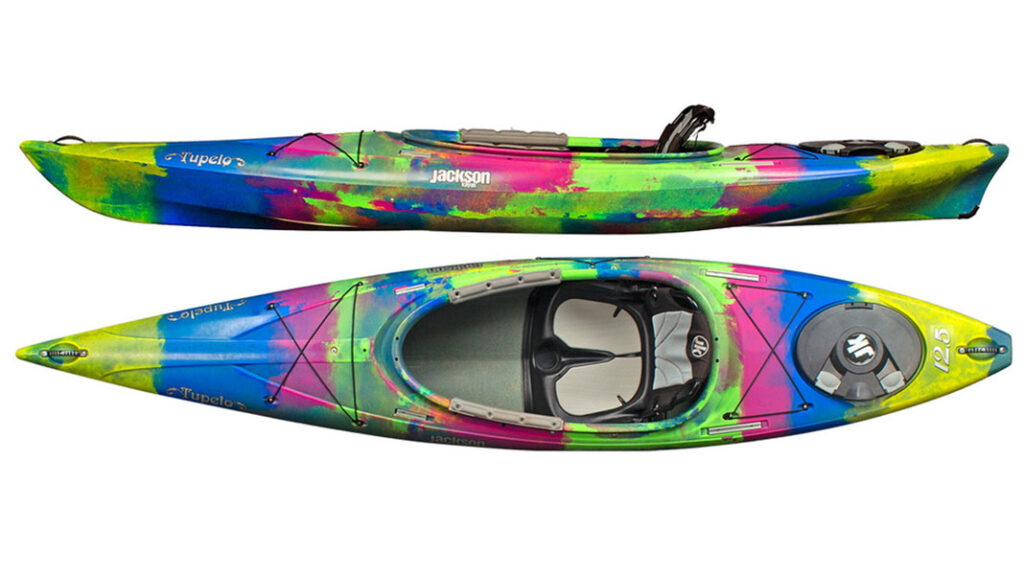
Conclusion
When it comes to kayaking, the choice between an inflatable kayak and a hard shell kayak is not an easy one. Both types offer their own set of advantages and disadvantages, and it’s important to carefully consider your needs, preferences, and priorities. Inflatable kayaks are highly portable and convenient, ideal for recreational use and beginners. They are durable, easy to use, and versatile in different water conditions. However, they may struggle with speed, tracking, and advanced techniques. On the other hand, hard shell kayaks provide exceptional stability, superior performance, and durability. While they may be more challenging to transport and require dedicated storage space, they are well-suited for experienced paddlers and those looking to push their limits.
Consider factors such as intended use, skill level, transportation options, and budget when making your decision. Test different models whenever possible and seek advice from experienced kayakers. By carefully evaluating your options and prioritizing your needs, you can confidently choose the kayak that suits you best. So gear up, grab your paddle, and embark on thrilling kayaking adventures, whether it be in an inflatable kayak or a hard shell kayak. The water awaits you!







